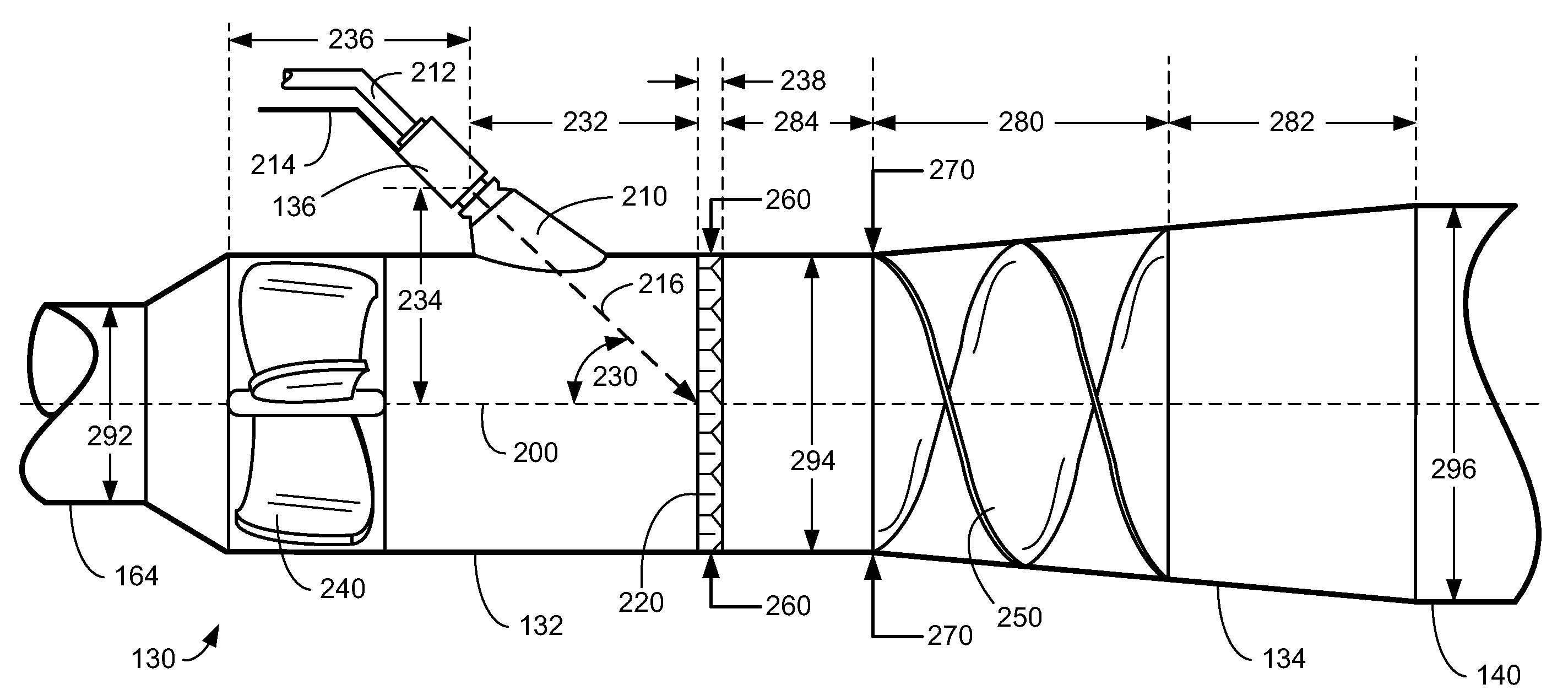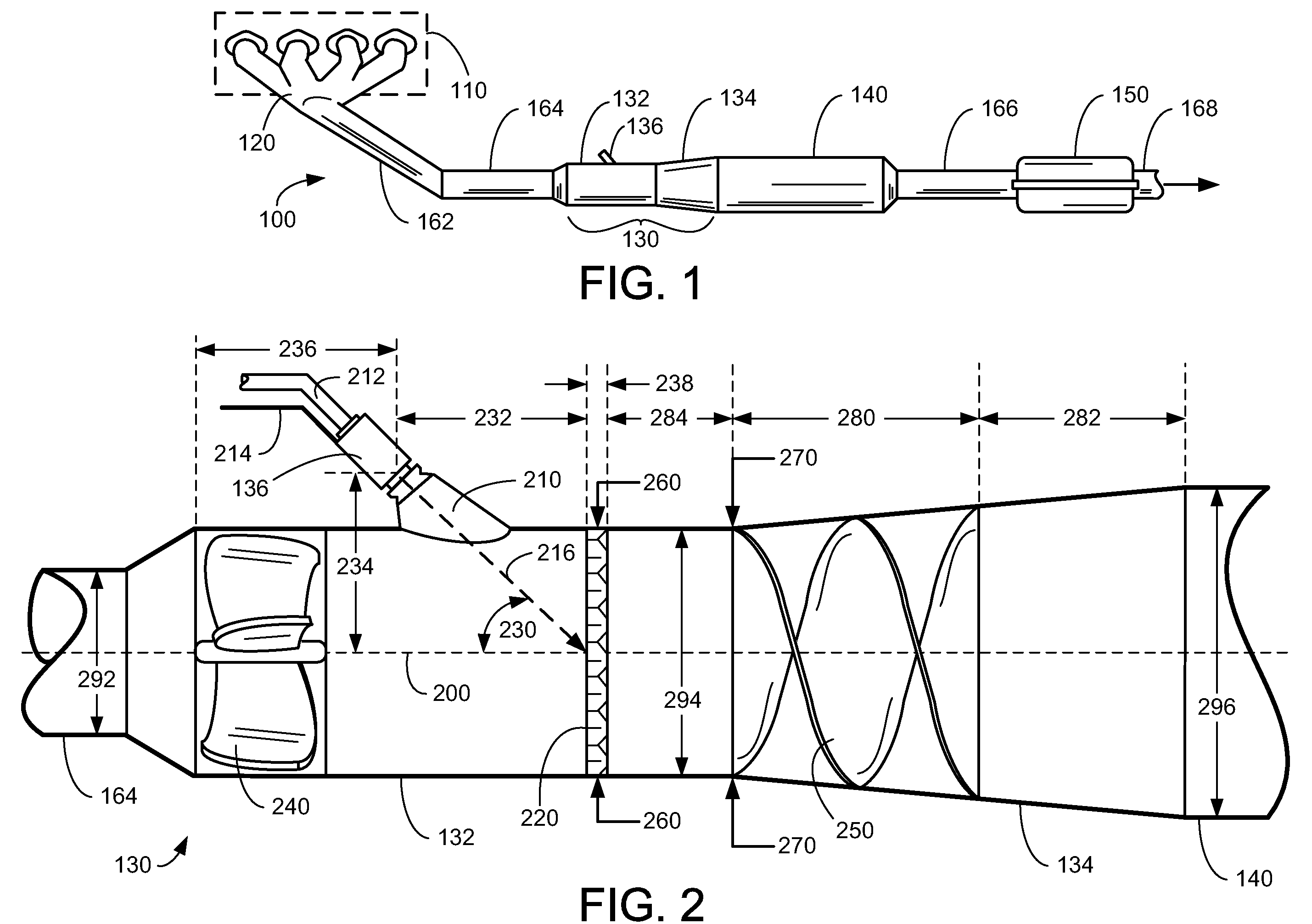Approach for Delivering a Liquid Reductant into an Exhaust Flow of a Fuel Burning Engine
a technology of liquid reductant and fuel burning engine, which is applied in the direction of machines/engines, mechanical equipment, transportation and packaging, etc., can solve the problems of catalyst degradation, insufficient evaporation rate, and additional challenges of the use of scr systems in non-stationary or vehicle related applications, so as to reduce the cost of injectors and increase the distance of travel
- Summary
- Abstract
- Description
- Claims
- Application Information
AI Technical Summary
Benefits of technology
Problems solved by technology
Method used
Image
Examples
Embodiment Construction
[0012]FIG. 1 illustrates an exhaust system 100 for transporting exhaust gases produced by internal combustion engine 110. As one non-limiting example, engine 110 includes a diesel engine that produces a mechanical output by combusting a mixture of air and diesel fuel. Alternatively, engine 110 may include other types of engines such as gasoline burning engines, among others. In some embodiments, engine 110 may be configured in a propulsion system for a vehicle. However, in other embodiments, engine 110 may be operated in a stationary application such as an electric generator, for example. While exhaust system 100 may be applicable to stationary applications, it should be appreciated that exhaust system 100 as described herein, is particularly adapted for vehicle applications, particularly where geometric limitations limit the mixing region of the exhaust gases and reductant.
[0013]Exhaust system 100 may include one or more of the following: an exhaust manifold 120 for receiving exhau...
PUM
| Property | Measurement | Unit |
|---|---|---|
| angle | aaaaa | aaaaa |
| angle | aaaaa | aaaaa |
| angle | aaaaa | aaaaa |
Abstract
Description
Claims
Application Information
 Login to View More
Login to View More - R&D
- Intellectual Property
- Life Sciences
- Materials
- Tech Scout
- Unparalleled Data Quality
- Higher Quality Content
- 60% Fewer Hallucinations
Browse by: Latest US Patents, China's latest patents, Technical Efficacy Thesaurus, Application Domain, Technology Topic, Popular Technical Reports.
© 2025 PatSnap. All rights reserved.Legal|Privacy policy|Modern Slavery Act Transparency Statement|Sitemap|About US| Contact US: help@patsnap.com



